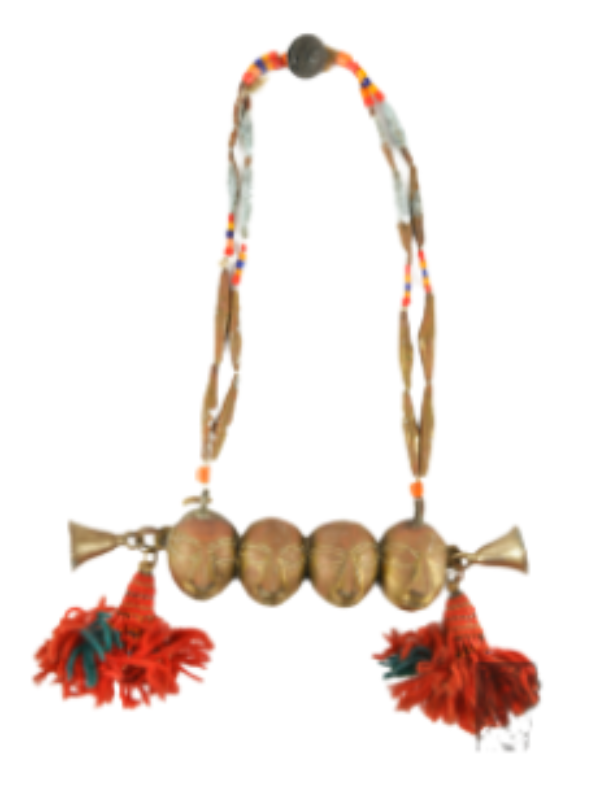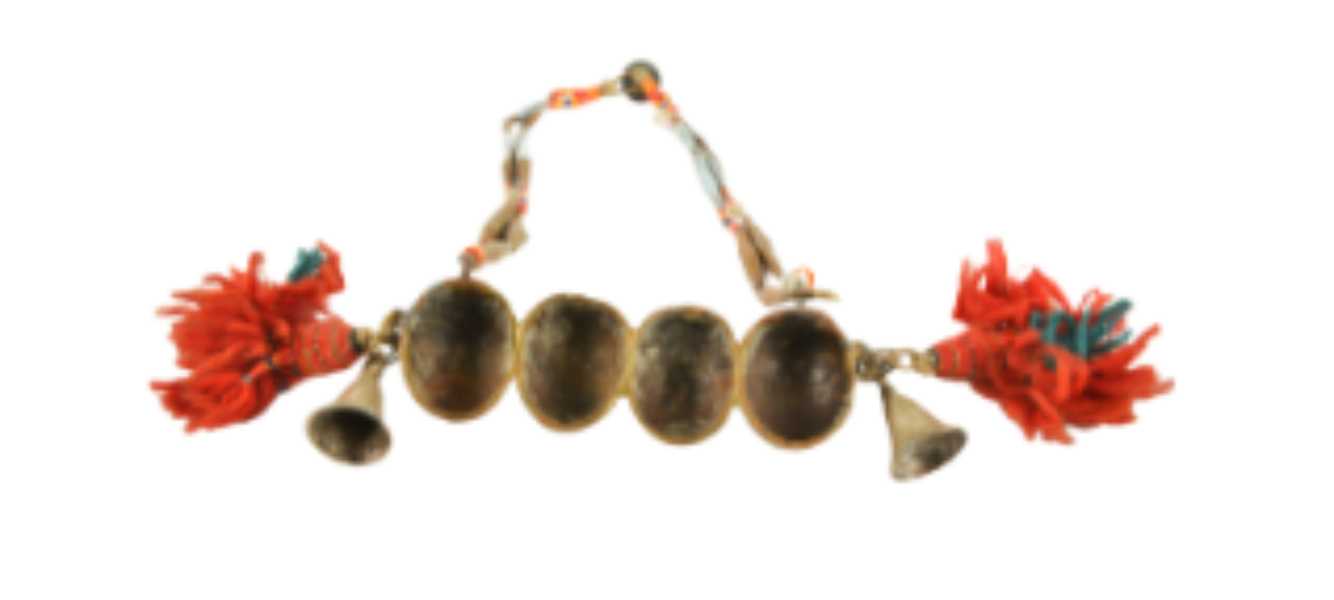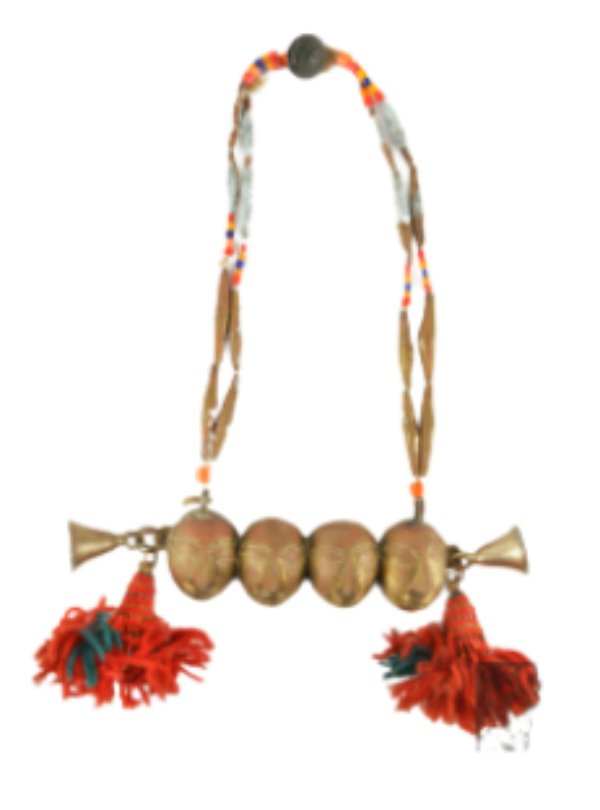State
Tribe Name
Art Type
short description
This necklace with brass pendants is a well acclaimed artifact of Naga warriors, especially from Konyak tribes of Northeast India. It has double strings made up of elongated oval-shaped metallic beads interspersed with multi-shaped colored tube glass beads. At the center is a brass pendant with four heads with miniature trumpet-shaped metal ornaments flanking it and embellished with tassels and beads made from wool.
Thumbnail

Filter Postion
Left
Filter Background
Off
Theme
Filter Header Image

content
Image

description
This necklace with brass pendants is a well acclaimed artifact of Naga warriors, especially from Konyak tribes of Northeast India. It has double strings made up of elongated oval-shaped metallic beads interspersed with multi-shaped colored tube glass beads. At the center is a brass pendant with four heads with miniature trumpet-shaped metal ornaments flanking it and embellished with tassels and beads made from wool.
The considered bravery and achievement would be the symbolic meaning carried by the necklace for Naga headhunters. The headhunters were a constant reminder of the activities of the Naga, which were an important aspect of warfare and prestige for the tribe. Usually found on the pendant, the mini-masks describe the warrior's glory in battle, signifying the number of enemy heads taken.
The considered bravery and achievement would be the symbolic meaning carried by the necklace for Naga headhunters. The headhunters were a constant reminder of the activities of the Naga, which were an important aspect of warfare and prestige for the tribe. Usually found on the pendant, the mini-masks describe the warrior's glory in battle, signifying the number of enemy heads taken.
Image Mode
landscape
Image

description
Naga people have the unusual belief that the human soul consists of two parts in Wancho dialect: Yaha (that which animates) and Mio (that which is spirit). Yaha was believed to roam the land of the dead after death, while Mio remained at home in the village and could influence its prosperity and fertility. Since it was believed that the Mio resided in the head, warriors collected and preserved enemy heads in order to hold this power.
Even though headhunting is no more in practice, the necklaces still signify to the Naga cultural heritage, warrior traditions, and craftsmanship.
Even though headhunting is no more in practice, the necklaces still signify to the Naga cultural heritage, warrior traditions, and craftsmanship.
Image Mode
landscape
promoted
On
Verified
Off
